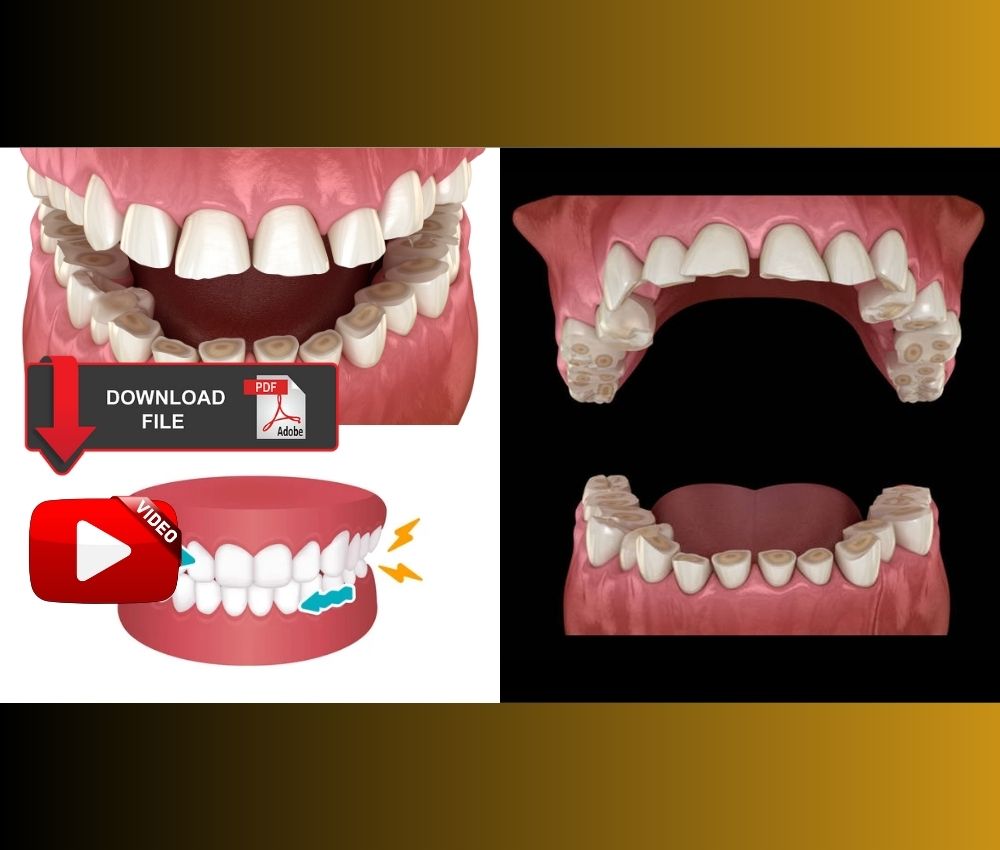Occlusal splints, also known as bite guards, night guards, or dental orthotics, are removable dental devices that cover the occlusal (biting) surfaces of teeth. They are used to manage conditions such as bruxism (teeth grinding), temporomandibular joint disorders (TMDs), and excessive dental wear.
📌 Recommended Article :
Video 🔽 How to Reduce a TMJ Dislocation? ... Dislocation of the temporomandibular joint is a painful condition that occurs when the mandibular condyle becomes fixed in the anterosuperior aspect of the articular eminenceA. Purpose of Occlusal Splints
Occlusal splints serve several key functions:
° Protecting Teeth from Wear: They act as a protective barrier between the upper and lower teeth, preventing enamel erosion and fractures caused by grinding.
° Reducing Jaw and Muscle Pain: By repositioning the jaw and alleviating pressure on the TMJ, they help relieve pain and muscle tension.
° Preventing Further Dental Damage: Patients with bruxism or TMD can experience cracked or worn-down teeth; splints help mitigate this risk.
Advertisement
B. Types of Occlusal Splints
There are different types of occlusal splints, depending on the patient’s needs:
° Stabilization Splints – Also called flat-plane splints, these are used to prevent bruxism and relieve muscle tension.
° Repositioning Splints – These are designed to reposition the lower jaw to relieve TMJ discomfort.
° Soft Splints – Made of a softer material, these are typically used for mild bruxism cases.
° Dual-Laminate Splints – A combination of hard and soft materials, offering comfort and durability.
📌 Recommended Article :
Video 🔽 What are the consequences of bruxism? ... In many cases, the patient does not know that he suffers from bruxism, and is detected when he attends the dentist motivated by another consultationC. Materials Used in Occlusal Splints
Occlusal splints are typically made from the following materials:
° Hard Acrylic Resin (PMMA - Polymethyl Methacrylate): The most common material, it is highly durable and provides excellent stability.
° Thermoplastic Materials: Softer and flexible, these materials offer more comfort but are less durable.
° EVA (Ethylene Vinyl Acetate): Used in softer night guards, providing a balance between comfort and protection.
Dual-Layered Materials: Some splints combine a hard outer shell with a soft inner lining for both protection and comfort.
📌 Recommended Article :
Video 🔽 Massage Tutorial: Myofascial release for TMJ/jaw pain ... On this occasion we share with you a video tutorial on massages to relax the muscles involved in this painful TMJ syndromeD. Who Needs an Occlusal Splint?
Patients who may benefit from occlusal splints include:
° Bruxism Sufferers – Those who grind or clench their teeth, especially at night.
° Patients with TMD – Individuals experiencing jaw pain, clicking sounds, or limited movement of the jaw.
° People with Dental Restorations – Those with veneers, crowns, or implants that need extra protection from excessive force.
📌 Recommended Article :
Article 🔽 Bruxism: A medical or dental issue? ...The parafunctional activities of bruxism cause hypersensitivity in teeth, headaches, painful muscles of the jaw and temporomandibular joint (TMJ)Conclusion
Occlusal splints are essential devices for protecting teeth, managing jaw disorders, and preventing long-term dental complications. Their effectiveness depends on proper diagnosis and professional customization by a dentist.
References
1. Crout, D. K. (2017). Anatomy of an occlusal splint. General Dentistry, 65(2), 52-56. AGD
2. Okeson, J. P. (2014). Management of Temporomandibular Disorders and Occlusion (7th ed.). Elsevier.
3. Jagger, R. (2003). The effectiveness of occlusal splints for sleep bruxism. Evidence-Based Dentistry, 4(2), 39-40.
4. Wright, E. F. (2014). Occlusal Appliance Therapy. In Manual of Temporomandibular Disorders (pp. 149–222). Wiley-Blackwell.
5. Clark, G. T., & Minakuchi, H. (2006). Oral Appliances. In Laskin, D. M., Greene, C. S., & Hylander, W. L. (Eds.), Temporomandibular Disorders: An Evidence-based Approach to Diagnosis and Treatment (pp. 377–390). Quintessence Publishing.
You may also like :
► Can children suffer from bruxism?
► VIDEO: Signs and symptoms of TMJ disorders
► Bruxism: Why do you need a dental splint?















